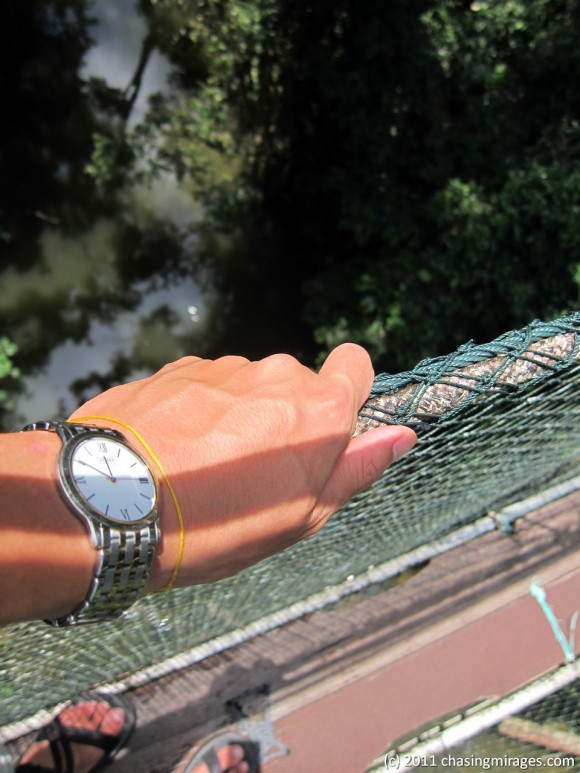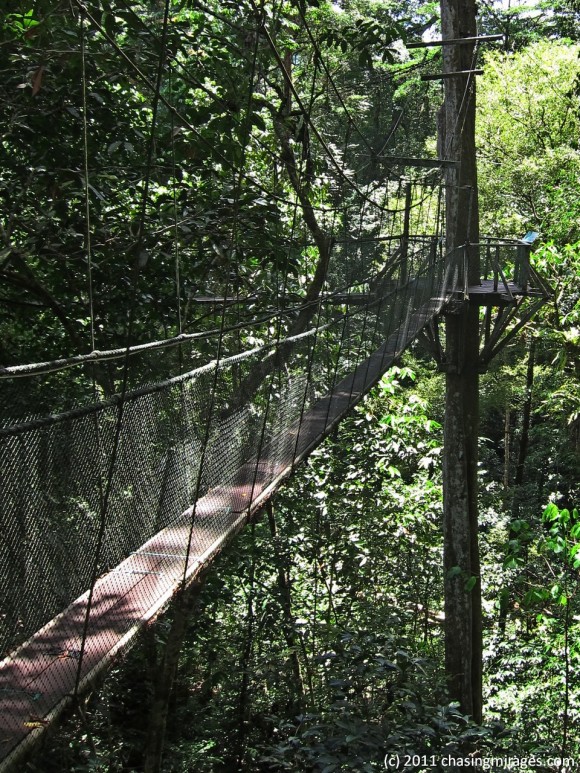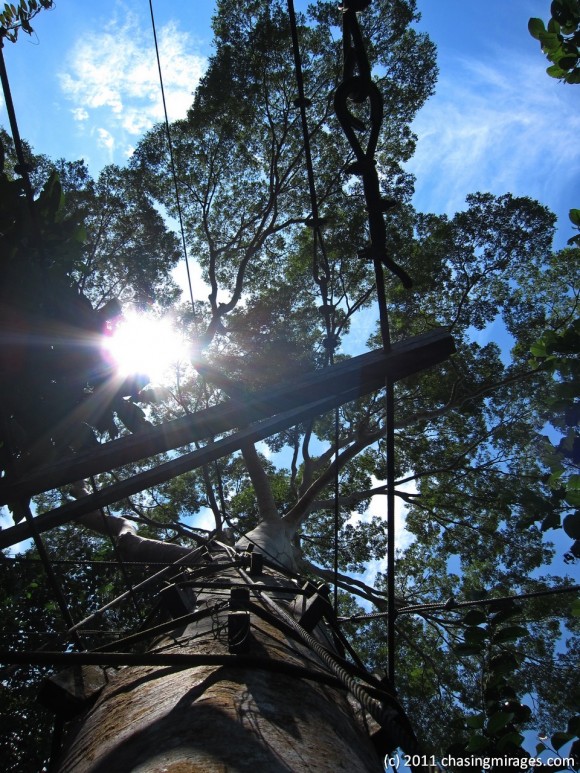Extending 480 meters, Mulu National Park’s rainforest canopy trail is claimed to be the world’s longest. Â The trail is a series of rope and wood bridges suspended among a number of treehouse-like platforms built about 20 meters above the forest floor. Â From the trail, Â all of the layers of the primary rainforest are visible. Â It’s an enjoyable, low-impact way to see the rainforest from a different perspective.
Warning: the mildly acrophobic may feel an oddly (un)pleasant tingly feeling in the ass region when looking down from the trail.

tip: if the butt tingling gets out of control, pause for a second, grip the rope, and stop looking down!
Mulu National Park is located on Borneo island in the Malaysian state of Sarawak. Sadly, it is a tiny oasis engulfed by a deforested wasteland.  According to the  Sarawak Forestry agency, Mulu National Park covers about 60,000 hectares (about 10 times the size of Manhattan).  A recent satellite imaging study concluded that over 177,000 hectares (about 30 Manhattans) of Sarawak forest were levelled in a single year in 2010.
This Google maps satellite image shows Mulu National Park, the dark green area around the “A” marker, surrounded by lighter green deforested areas scarred with worm-like logging roads.  Note that almost all of Brunei’s land area is still dark green, covered with primary forests.
Some estimate that 85% of Sarawak is deforested.  One of the Earth’s most valuable banks of biodiversity, accruing interest for countless millennia, has been erased from existence by the hand of man in a mere 30 years.




0 Comments
2 Pingbacks